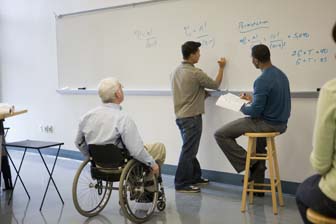Summary
Please enable javascript to play this video.
| Quick Facts: Mathematicians and Statisticians | |
|---|---|
|
$104,350 per year
$50.17 per hour |
|
| Master's degree | |
| None | |
| None | |
| 34,600 | |
| 8% (Much faster than average) | |
| 2,700 | |
What Mathematicians and Statisticians Do
Mathematicians and statisticians analyze data and apply computational techniques to solve problems.
Work Environment
The top employers of mathematicians and statisticians are the federal government and scientific research and development companies. Mathematicians and statisticians may work on teams with engineers, scientists, and other specialists.
How to Become a Mathematician or Statistician
Mathematicians and statisticians typically need at least a master’s degree in mathematics or statistics. However, some positions are available to those with a bachelor’s degree.
Pay
The median annual wage for mathematicians was $121,680 in May 2024.
The median annual wage for statisticians was $103,300 in May 2024.
Job Outlook
Overall employment of mathematicians and statisticians is projected to grow 8 percent from 2024 to 2034, much faster than the average for all occupations.
About 2,200 openings for mathematicians and statisticians are projected each year, on average, over the decade. Many of those openings are expected to result from the need to replace workers who transfer to different occupations or exit the labor force, such as to retire.
State & Area Data
Explore resources for employment and wages by state and area for mathematicians and statisticians.
Similar Occupations
Compare the job duties, education, job growth, and pay of mathematicians and statisticians with similar occupations.
More Information, Including Links to O*NET
Learn more about mathematicians and statisticians by visiting additional resources, including O*NET, a source on key characteristics of workers and occupations.
 United States Department of Labor
United States Department of Labor













